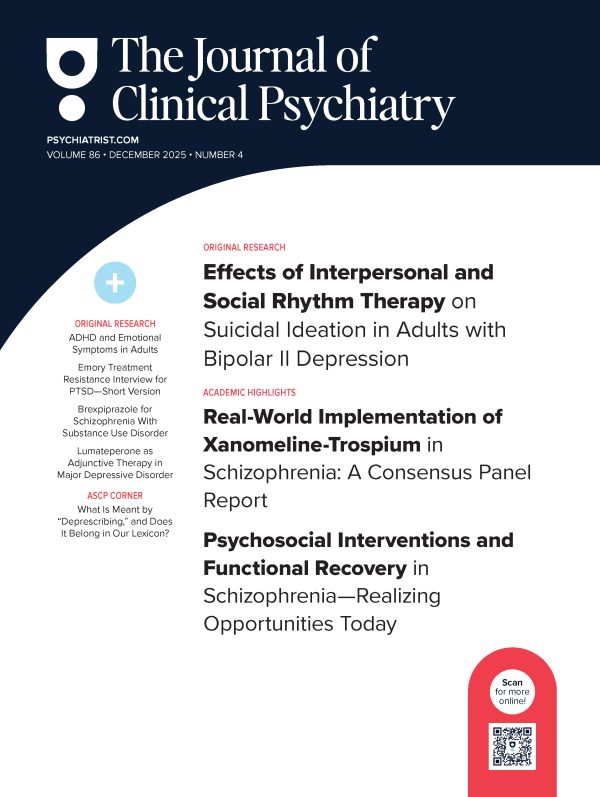Objective: The aim of the present study was to evaluate the efficacy of ondansetron, a selective 5-HT3 antagonist, in the treatment of Tourette’s disorder.
Method: Participants (N = 30) aged 12 to 46 years, diagnosed with DSM-IV Tourette’s disorder and resistant to previous haloperidol treatment, were enrolled in a 3-week, randomized, double-blind, placebo-controlled outpatient study. Assessments were conducted at baseline and once a week during the study period. Scales used included the Tourette’s Syndrome Global Scale (TSGS), the Yale Global Tic Severity Scale (YGTSS), and the Yale-Brown Obsessive Compulsive Scale. Ondansetron dose was 8, 16, and 24 mg/day in the first, second, and third weeks, respectively.
Results: A significant positive effect of ondansetron on tic severity, as assessed by the TSGS, was noted (baseline vs. endpoint: mean ± SD = 29.62 ± 20.33 vs. 20.58 ± 12.82, p = .002 vs. placebo). However, no significant effect was detected upon assessing ondansetron/placebo effect on tic severity with the YGTSS (baseline vs. endpoint: mean ± SD = 24.04 ± 9.44 vs. 17.50 ± 9.48, p = .15 vs. placebo). No change in obsessive-compulsive symptoms was noted in either group. Adverse effects included mild and transient abdominal pain.
Conclusions: Ondansetron may have anti-tic effects in patients with Tourette’s disorder. Large-scale, double-blind studies should further assess the anti-tic efficacy of ondansetron.
Please sign in or purchase this PDF for $40.00.





